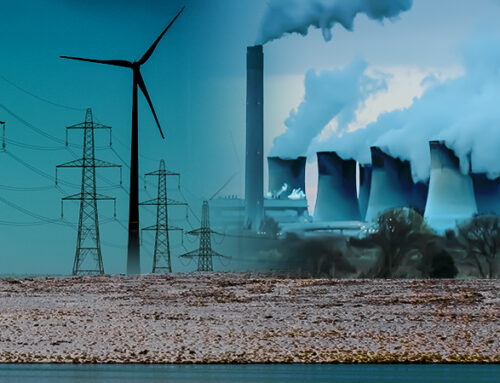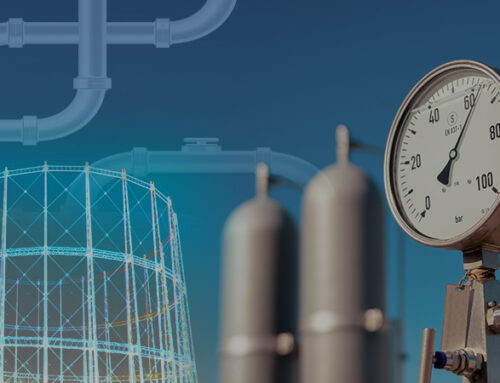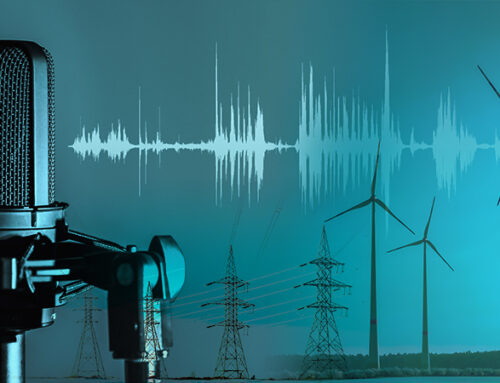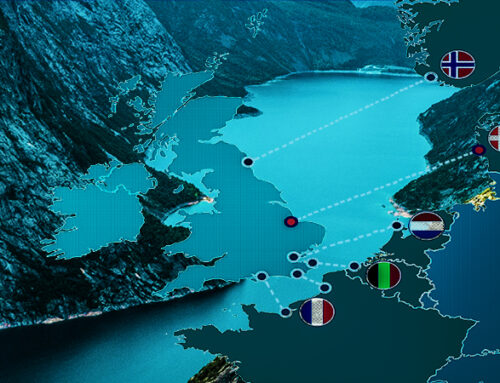The German electricity system has been celebrating record levels of renewable generation, with 85% of the electricity consumed in the country on 30 April coming from renewable sources. However, this high level of renewable energy is not without cost in terms of grid stability, and last week the separation of the German and Austrian grids was announced following complaints by the Polish and Czech energy regulators about the impact of Germany using their transmission systems to wheel power from the renewable generation centres in the north of the country to the large industrial demand centres in the south.
The high levels of renewables are also causing issues domestically as the German system operator has to secure significant volumes of back-up generation to maintain security of supply in winter.
Germany’s renewable boom has disrupted neighbouring power grids
Germany and Austria share a power zone, meaning that interconnector capacity for cross-border electricity flows does not currently need to be explicitly scheduled. The zone was created in 2002 as part of a wider plan to integrate European energy markets, and is the largest cross-border power market on the Continent. However, as the amount of renewable power generated in the north of Germany has grown, the amount of power being traded between Germany and Austria has at times been twice the amount of physical capacity between the two countries, meaning excess flows spill over into the grids of neighbouring countries.
The Polish grid operator, PSE, attributes a brownout in the summer of 2015 to this problem, asserting it had to curtail supplies to industrial consumers when Polish hydro power was restricted due to a heat wave, as it was unable to import the additional power it needed due to congestion at the boarder caused by unscheduled flows.
At the end of 2014, the Polish energy regulator, URE asked the Agency for the Co-operation of Energy Regulators (“ACER”) to consider whether the decisions of the Austrian, Hungarian, Slovakian and Slovenian electricity authorities approving the methods of allocation of cross-border transmission capacity were compliant with EU regulations. The URE’s position was that the absence of a capacity allocation procedure at the German-Austrian border resulted in cross-border exchanges in the CEE region being treated in a discriminatory, non-market-based way and provided insufficient economic signals to relevant market participants and transmission system operators (“TSOs”), meaning that cross-border capacity allocations elsewhere in the CEE were not complaint with EU rules.
Almost half of all power exchanges between Germany and Austria flow through neighbouring grids
In September 2015 ACER published its response, essentially agreeing that EU regulations were not being satisfied and that transmission capacity at the German-Austria border should indeed be subject to capacity allocations, effectively splitting the single power zone between the two countries.
ACER’s report focuses on the issue of unscheduled flows in the area. These arise in two ways: “loop flows” occur when electricity exchanges in one bidding zone are partly realised through other bidding zones; while “unscheduled transit flows” happen when electricity exchanges across bidding zone borders are not matched with appropriate cross-border transmission capacity. Loop flows are an inherent feature of zonal markets, but unscheduled transit flows could be avoided through co-ordinated capacity allocation such as flow-based market coupling.
Unscheduled flows are problematic for TSOs, who tend to respond by reducing the amount of capacity available for cross-border trade in order to ensure physical flows remain within security limits. This results in sub-optimal use of infrastructure and economic deficits. TSOs also often have to apply remedial actions within their own networks, including significant re-dispatching, counter-trading and curtailments, all of which add to the costs of managing the system. ACER calculates that the welfare losses due to unscheduled flows amounted to EUR 469 million in 2013, up 45% since 2011, and indicates that this figure is conservative since it only accounts for losses at the border and excludes losses relating to sub-optimal grid management within bidding zones.

ACER’s report quotes a 2012 briefing paper by ENTSO-E on interconnected system operation conditions in CCE, highlighting the impacts in the CEE region and the potential threats to system security:
“The current power production from RES especially from wind generation in Northern Germany, Denmark, the North Sea and the Baltic Sea regions is physically transported by the German internal grid and also in large extent by parallel flows via transmission systems of neighbouring countries to the Southern parts of Germany, to the Alps or even Southern parts of the Continent. The limited predictability of these flows has on occasion caused non-compliance with fundamental grid operational security criteria in parts of the Central Continental European region. Transmission lines overloading or (n-1) violations in parts of the network which endanger the network have been increasingly reported by TSOs.
On several borders the difference between physical and scheduled flows is of such magnitude that they are often in opposite directions. This is observed more than 90% of the time on the PL/DE border, more than 90% on PL/CZ and more than 80% on the PL/SK border. Heavy “unplanned” transit flows added to scheduled flows cause severe loading on southern interconnectors (PL/CZ, PL/SK, DE/CZ and also SK/HU and SK/AU) and lead to non-compliance with fundamental network security criteria.”
There is a high correlation between Germany/Austria cross border exchanges and unscheduled flows, which, as shown in the chart were close to 90% in 2013 and 2014.

Overall, ACER found that 48% of Germany/Austria cross-border exchanges were being realised through the neighbouring CEE and CWE networks.
Power zone split and prospects of new transmission capacity
ACER concluded that there is structural congestion on the DE/PL, DE/CZ, and CZ/AT borders as well within the German network, and that physical realisation of electricity exchanges between Germany and Austria was taking place via these structurally congested interconnectors resulting in frequent limitations on cross-border transmission capacity and a requirement for remedial actions on the interconnectors and within neighbouring power grids.
It considered the Germany/Austria physical interconnection to be generally unable to accommodate all the international trade requested by market participants, and that existing mitigating measures such as virtual phase shifters on the German/polish border could not replace transparent, non-discriminatory and market-based congestion management procedures. For this reason a capacity allocation procedure at the German/Austrian border should be implemented, so essentially ACER agreed with the analysis of the Polish regulator.
Following consultations, last week the German and Austrian electricity regulators announced that their markets would indeed be split from 1 October 2018, however there have been calls from EFET and others to delay this to 1 January 2019 due to the impact on calendar year 2018 power contracts.
Although splitting the zone is counter to the general direction of travel in terms of European power market harmonisation, the move will have benefits aside from alleviating the pressure on neighbouring grids. The German regulator predicts that the splitting of the price zone would significantly reduce the need for German winter reserves from 10.4 GW this coming winter to 3.7 GW for winter 2018/19.
Consumers in Austria are likely to be less happy, as the move will restrict their access to cheap German renewable energy, so a new transmission line between the two countries planned with an initial commissioning date in 2022.
Germany is also continuing with its efforts to reduce congestion internally, however these developments have been subject to significant delays, often due to community objections. New cross-border capacity is also being added to the north of the country, with a planned interconnector to Sweden, and construction has already commenced on a line between Germany and Norway which will allow surplus German wind power to be stored in Norwegian hydro reservoirs.
With 85% of electricity demand being met on occasion by renewable sources, Germany’s Energiewende is often held up as an example of the success of strong environmental policy. The near-chaos caused to the transmission systems in neighbouring countries, and the vast quantities of conventional generation required to be held in reserve are frequently airbrushed out as inconvenient details.
The reality is that without proper system planning, the addition of large amounts of renewable generation creates unacceptable threats to system security. Adding insult to injury is the fact that Germany’s renewables boom has had no discernible effect on the country’s CO2 emissions while greatly inflating the cost to consumers.
Policymakers often fall into the trap of setting high renewable generation targets forgetting that renewable generation is not an end in itself. Without proper integration into the system, and due consideration to the generation mix as a whole including reserve power, the trilemma goals of decarbonisation, affordability and energy security are not met, as the German example demonstrates to dramatic effect.






Leave A Comment